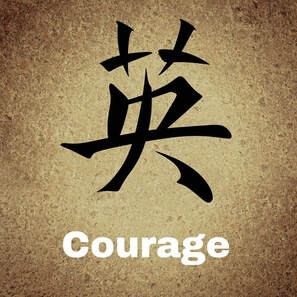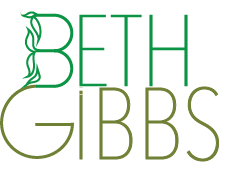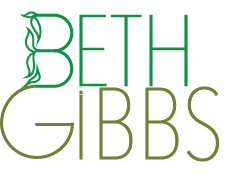ENLIGHTEN UP! a blogSelf-awareness stories: lighting our way to clarity, contentment and resilience in a complicated world.
|
 Courage is not the absence of fear, but rather the judgment that something else is more important than fear. ― Ambrose Redmoon The words courage and bravery are often used interchangeably but there is a difference between their meaning and how they may play out in your life. Bravery is defined as the ability to confront pain, danger, or fending off attempts of intimidation without fear. Courage, on the other hand, is thought of as the strength needed to confront pain, danger, fending off attempts of intimidation or facing challenges in spite of fear. It involves psychological or moral courage such as taking unpopular actions, like standing up to a school bully or reporting and following through with a sexual assault charge and facing the backlash, like so many #MeToo victims are doing. Courage is facing rather than avoiding something that frightens you. Maybe toggling between the words bravery and courage sounds like splitting hairs but if you are naturally brave by instinct or nature you can stop reading here. If, like most of us, you do experience fear it helps to understand ways to manage it before moving forward. Perhaps you want to start a podcast, a blog, a business or expand one you’ve already created. Maybe it’s dealing with a family crisis or a difficult personal one. Maybe you want to run for a local or statewide political office – this will require massive amounts of courage in today’s world! In all cases, you will most likely have to dance with fear first. Fear is the challenge we overcome in order to be courageous. Fear is an uncomfortable emotion or inner alarm that results from something we recognize, resist or perceive as a danger or a threat. It is a strong emotion with many shades such as:
Fear can be real or perceived. Fear sharpens the senses to danger while preparing the body for fight or flight. It’s a call to action. To be authentic, you will need to be clear about what you fear and be able to define the difference between the two. If you fear being mugged, raped, physically assaulted, or getting lost in a storm on Mt. Everest, the danger and threat are recognized as very real. If the danger is not real, it’s perceived. Anodea Judith, in her book Creating on Purpose describes perceived fear as a False Event Appearing Real (F. E. A. R.). A personal example of a perceived fear relates to my attachment to financial security. For years, in spite of working hard and saving money ‘for a rainy day’ as I had been taught by the women in my family, I retained a constant fear of being broke, destitute and helpless. Only when I realized how unlikely that perceived fear was could I let it go. At the same time, I understood that it could happen but if it did it would be caused by something outside of my control. I am still in process of becoming a courageous self-aware person on all fronts because a courageous self-aware person:
You use the tool and techniques of self-awareness, and personal growth to recognize perceived fear, confront real fear, and move beyond fear to take courageous skillful action. To do this try sharpening your witnessing skills. Witnessing is a way to be fully present and see clearly what is happening within and around you in the present moment. Regardless of who you are, where you live, or your current state of being, your ability to witness, observe and be aware of what is happening in the moment enables you to respond appropriately in authentic, balanced and courageous ways. This is true whether you are dealing with issues in your body, your breath/energy, your mind or an external situation you are facing. And, of course, one of the best ways to develop the ability to witness is to practice. One of the first witnessing practices to learn is awareness of your breathing. Breath is seen as a key connector between what is happening in the body, what is going on in the mind and how you react or respond to external events. When you find yourself in a tricky or difficult situation needing your immediate attention you may not be able to go for a walk, lay out your yoga mat or whip out a meditation cushion to release stress from your body and calm your mind. However, you will be able to tune into your breath, take stock of the situation, and understand clearly what is going on before taking action. Here is one way to practice witnessing the breath and one ‘on the spot remedy’ for addressing stressful situations. Practice: Witness Your Breathing Instructions To begin, bring your attention to the rising and falling of breath in your body. Can you feel your:
Can you feel your:
If you observe any of these two results you may want to try Balance Breathing in the moment to help your slow and deepen your breath, calm your mind, and prepare your body to respond appropriately to what you are facing. Balance Your Breath Instructions
It helps to practice this technique when you are not feeling stressed or fearful so it will be a top-of-mind technique to use when you are feeling fearful or stressed and need to be courageous in spite of a scary real situation or F. E. A. R. - a false event appearing real.
0 Comments
Your comment will be posted after it is approved.
Leave a Reply. |
Archives
July 2024
AuthorBETH GIBBS started her yoga practice in 1968, four months after her son was born and she’s been practicing ever since. She currently teaches all levels therapeutic yoga classes for adults, and specialty classes for seniors in the Hartford, Connecticut area. Beth is a certified yoga therapist through the International Association of Yoga Therapists and is guest faculty at the Kripalu School of Integrative Yoga Therapy. She writes for the blogs, Yoga for Healthy Aging, and Accessible Yoga. Her master’s degree from Lesley University in Cambridge, MA is in Yoga Therapy and Mind/Body Health. Categories |
|
|
Enlighten Up! a Blog
|
Copyright © 2023 Beth Gibbs

 RSS Feed
RSS Feed
